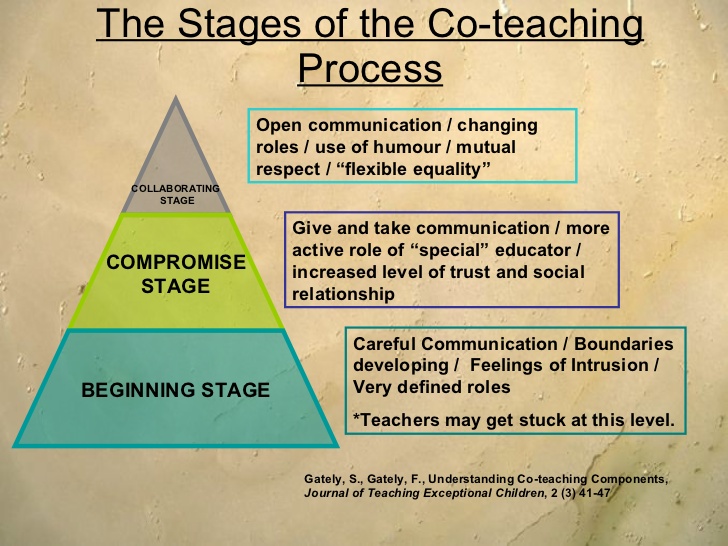
The Best Strategies for Working with a Co-Teacher
25th April 2024
In today’s educational landscape, collaboration is the key for the student success. One powerful form of collaboration is co-teaching, where two educators/teachers work together to support the learning requirements of all students in a classroom. These include –
- creating clear roles and tasks
- building trust and open communication
- leveraging each other's assets
- nurturing a collaborative classroom culture
- embracing flexibility
- looking for professional development and support, and
- engaging in regular reflection
By executing these strategies that we have explored in the blog, co-teachers can create a supportive and inclusive learning environment where all students can succeed.
Co-teaching can be incredibly rewarding, but it also comes with its challenges. To navigate these challenges and find success in co-teaching, teachers can employ a variety of tips and strategies.
Establish Clear Roles and Responsibilities
One of the first steps to success in co-teaching is establishing clear roles and tasks for each co-teacher. This helps in avoiding confusion and safeguards that both educators are working toward common goals. Roles can be divided based on expertise, interests, or student needs. Regular communication and collaboration are essential for refining and adjusting these roles as needed.
Build Trust and Communication
Trust and open communication are the foundation of effective co-teaching partnerships. Co-teachers should create a supportive and respectful environment where they can openly discuss ideas, apprehensions, and strategies. This includes sharing feedback constructively and being receptive to feedback from your co-teacher. Building trust takes time and effort, but it is crucial for the success of the collaboration.

Leverage Each Other's Strengths
Every educator brings unique strengths and expertise to the table. Co-teaching provides an opportunity to leverage these strengths for the benefit of all students. Identify each co-teacher's areas of expertise and find ways to incorporate them into instruction. For example, if one teacher excels at technology incorporation, they can take the lead on incorporating digital tools into lessons. By making the most of each other's strengths, co-teachers can provide a more comprehensive learning experience for students.
Foster a Collaborative Classroom Culture
In a co-teaching classroom, collaboration extends beyond the teachers to include the students as well. Foster a collaborative classroom culture where students are encouraged to work together, share ideas, and support each other's learning. This can be achieved through cooperative learning activities, group projects, and structured peer communications. By promoting collaboration among students, co-teachers can create a positive and inclusive learning environment where all students feel valued and supported.
Embrace Flexibility and Adaptability
Flexibility is essential in co-teaching, as no two days are ever the same in the classroom. Co-teachers must be prepared to adapt their plans and strategies based on the needs of their students and the dynamics of the classroom. This may involve modifying lesson plans on the fly, adjusting instructional strategies, or providing additional support to individual students as needed. Embracing flexibility allows co-teachers to respond effectively to changing circumstances and ensure that all students are given the support they need to succeed.
Seek Professional Development and Support
Continued professional development is key to improving co-teaching practices and overcoming challenges. Co-teachers should seek out training opportunities, workshops, and resources specifically geared toward collaborative teaching.
Additionally, they can benefit from connecting with other co-teachers to share experiences, strategies, and best practices. Building a network of support among colleagues can provide valuable insights and encouragement as co-teachers work to refine their practice.
Reflect and Iterate
Reflection is a powerful tool for growth and improvement in co-teaching. Co-teachers should regularly reflect on their experiences, both individually and together, to identify successes, challenges, and areas for growth. By reflecting on their practice and seeking feedback from each other and their students, co-teachers can continually iterate and refine their approach to co-teaching.
To End With
Co-teaching offers a valuable opportunity for educators to collaborate and support the diverse needs of students in the classroom. By establishing clear roles, building trust and communication, leveraging each other's strengths, fostering a collaborative classroom culture, embracing flexibility, seeking professional development and support, and reflecting on their practice, co-teachers can find success in their collaborative efforts. SEN online course will help you in shaping an inclusive classroom.
With commitment, patience, and a vow to continuous improvement, co-teaching can flourish, ultimately benefiting the students they serve.
Happy Learning!
Written By : Park Jin Ae




